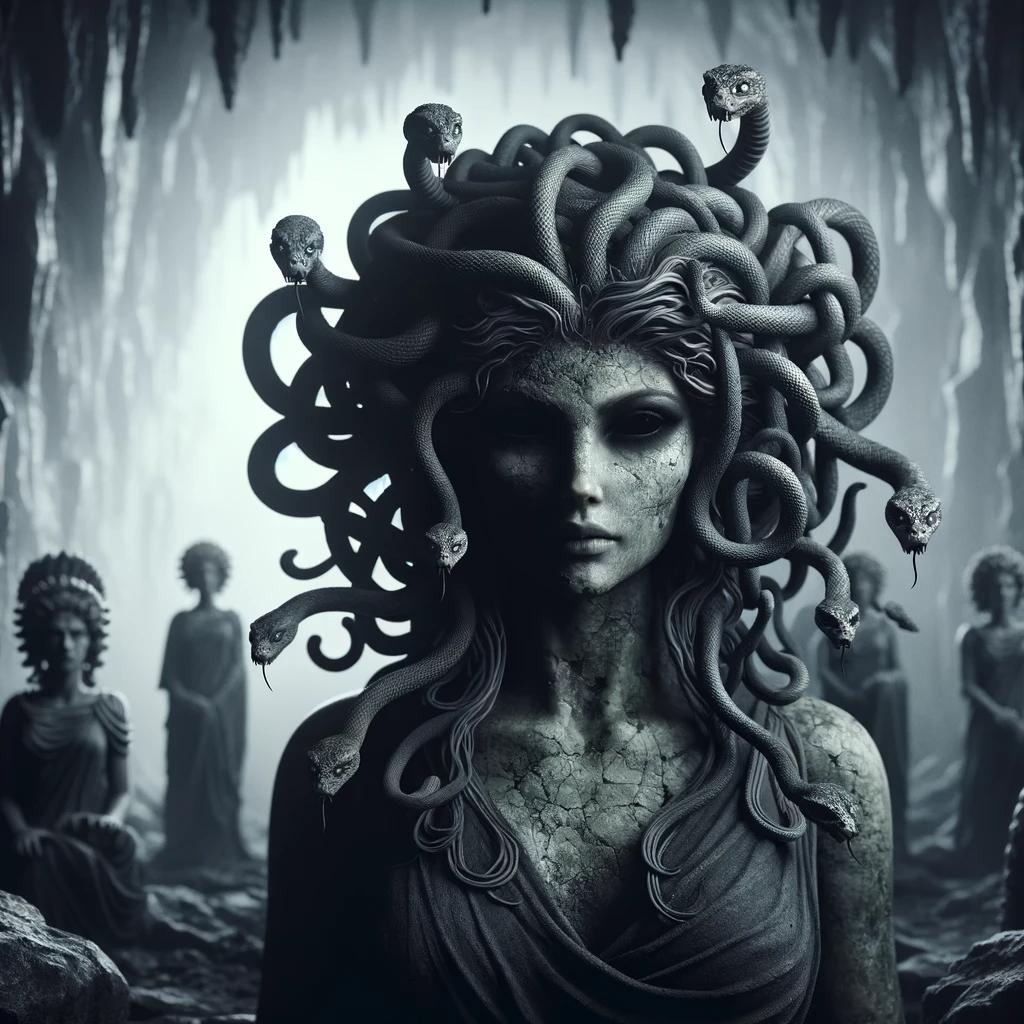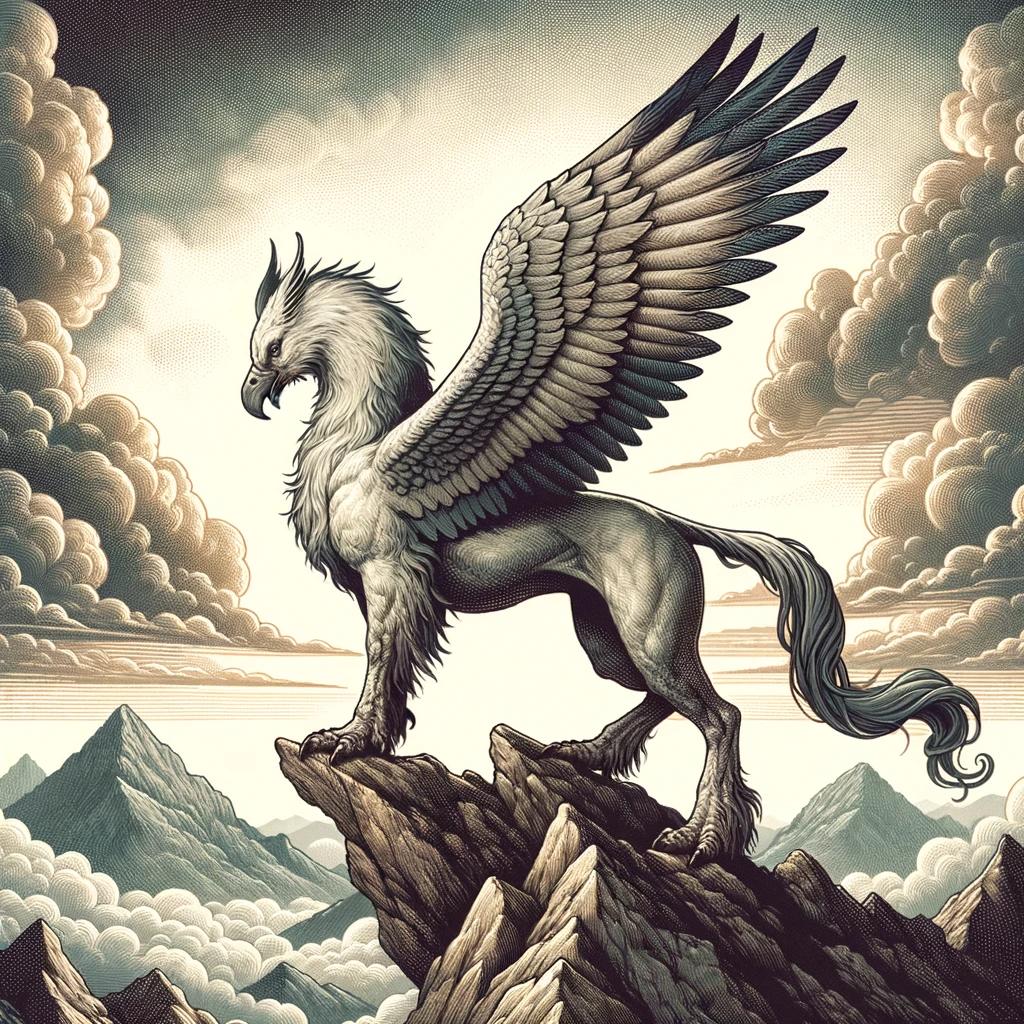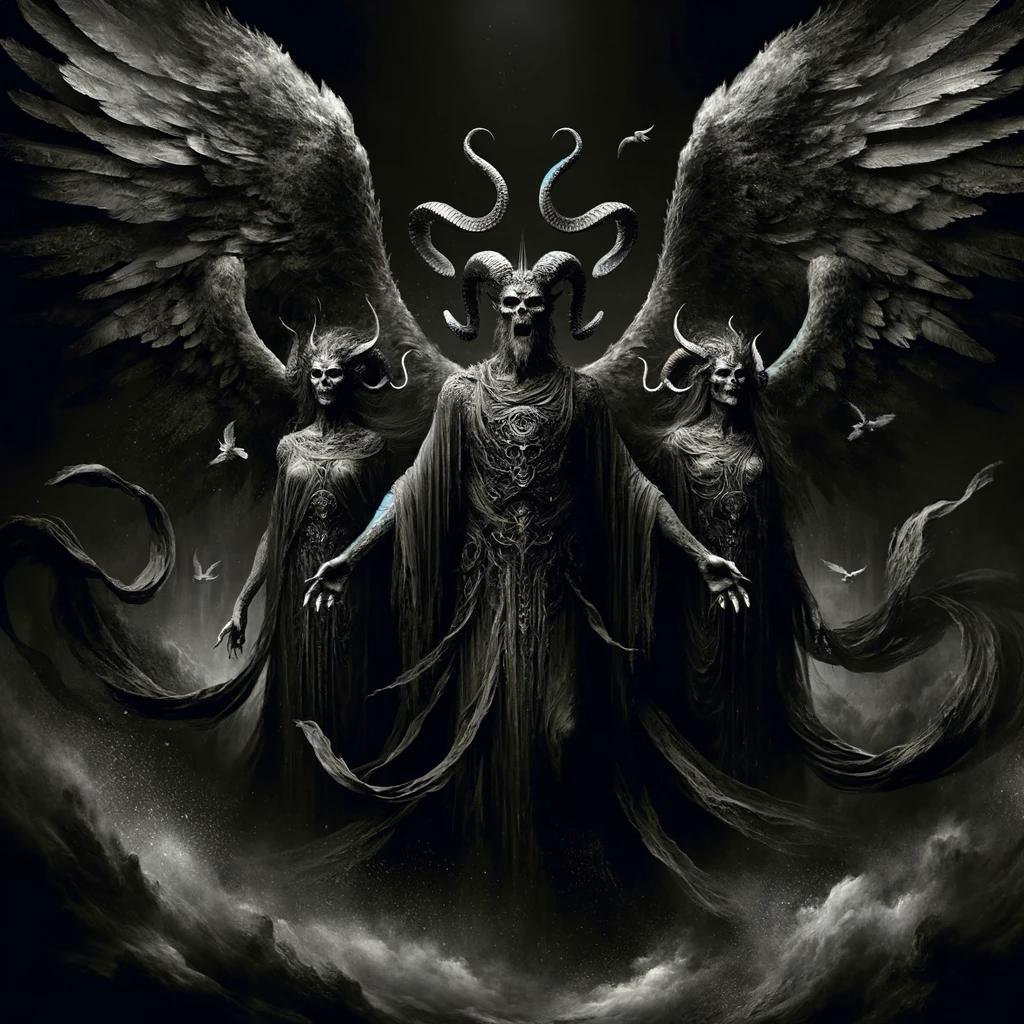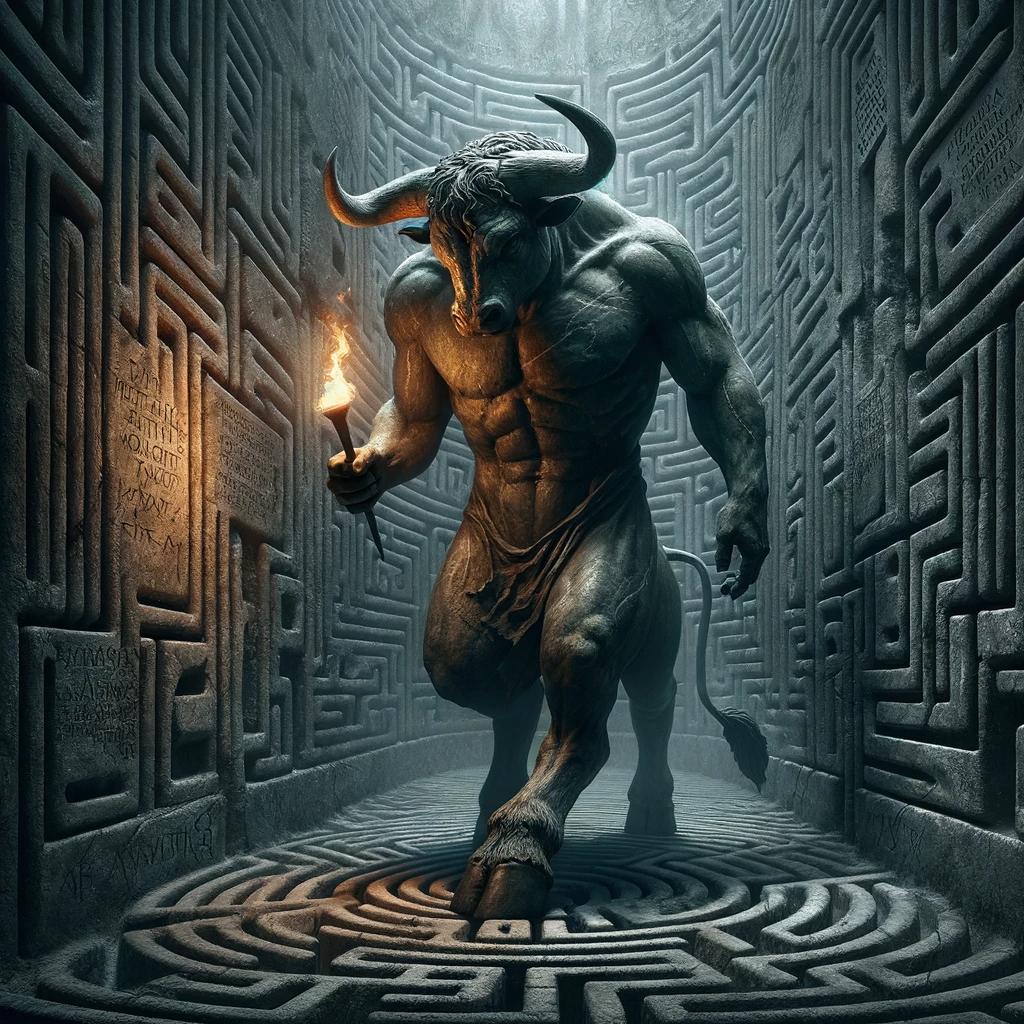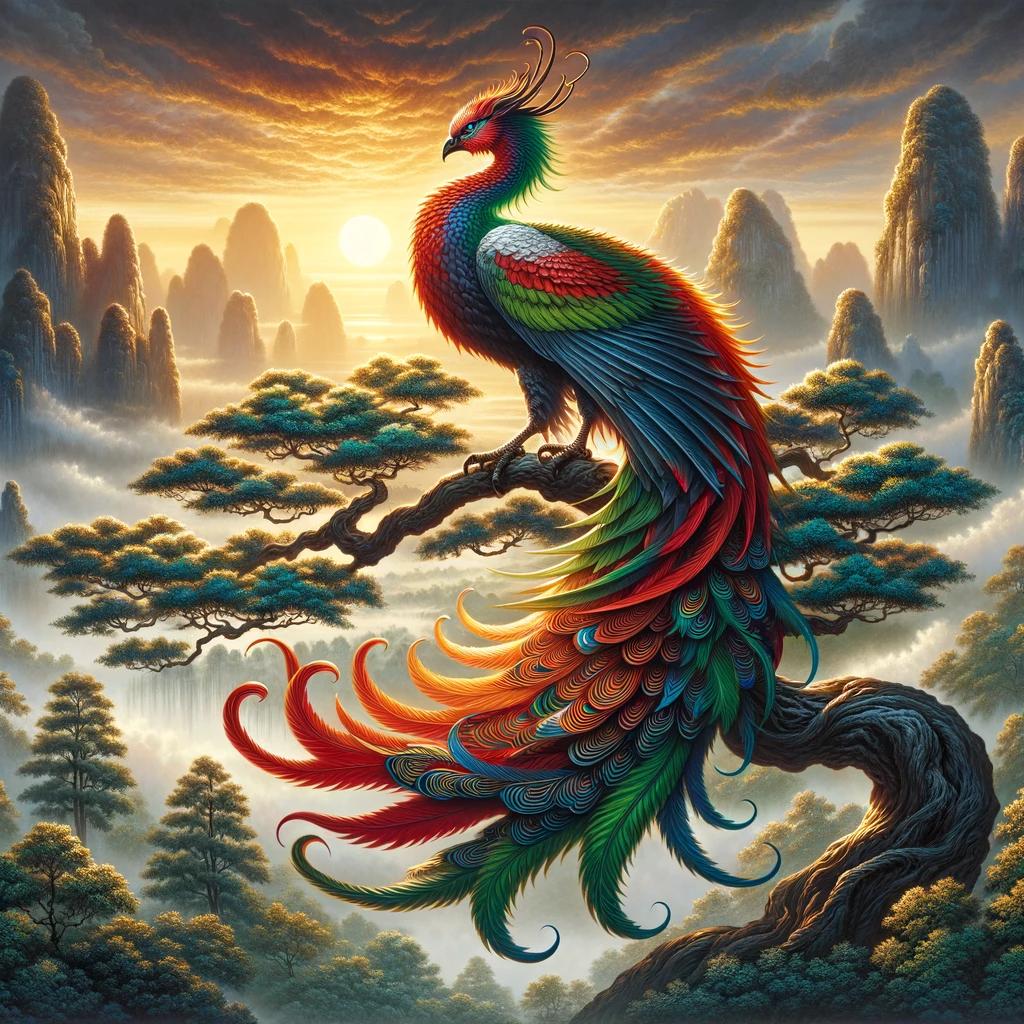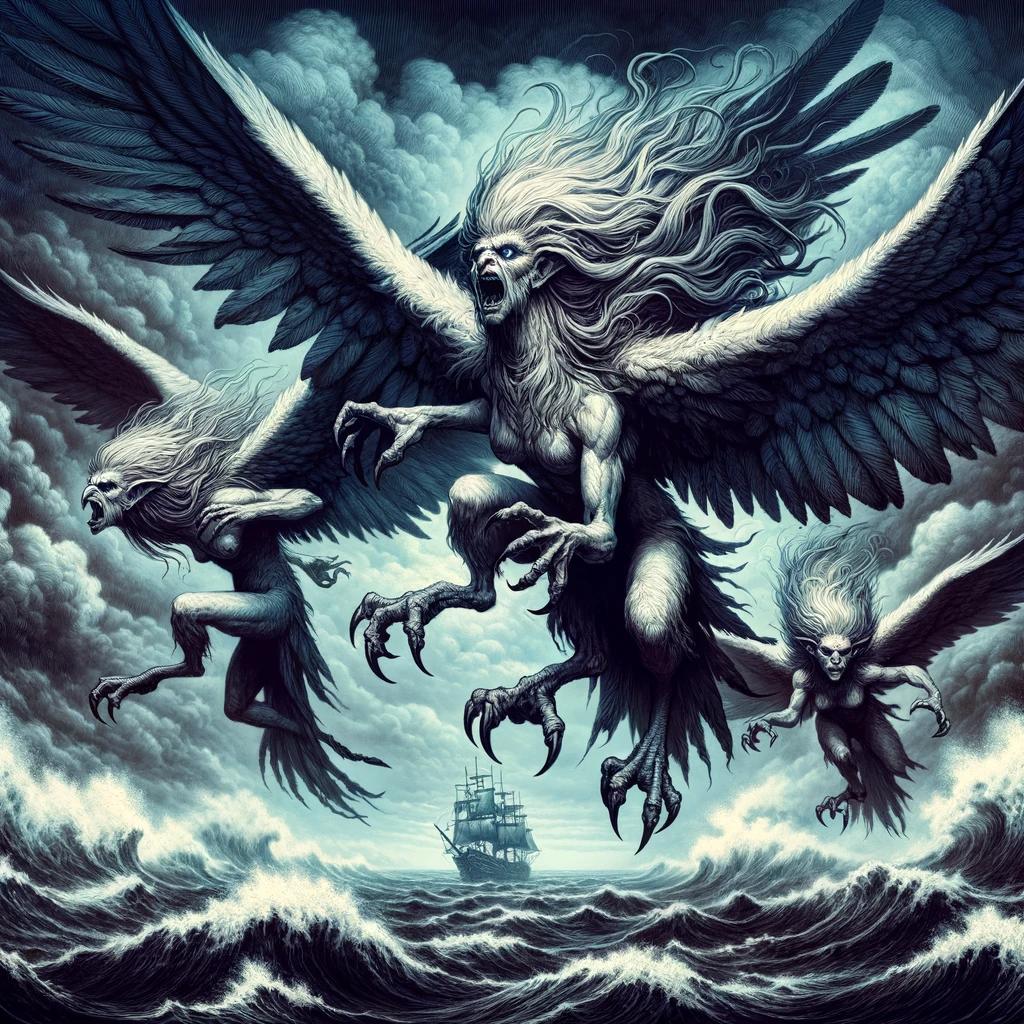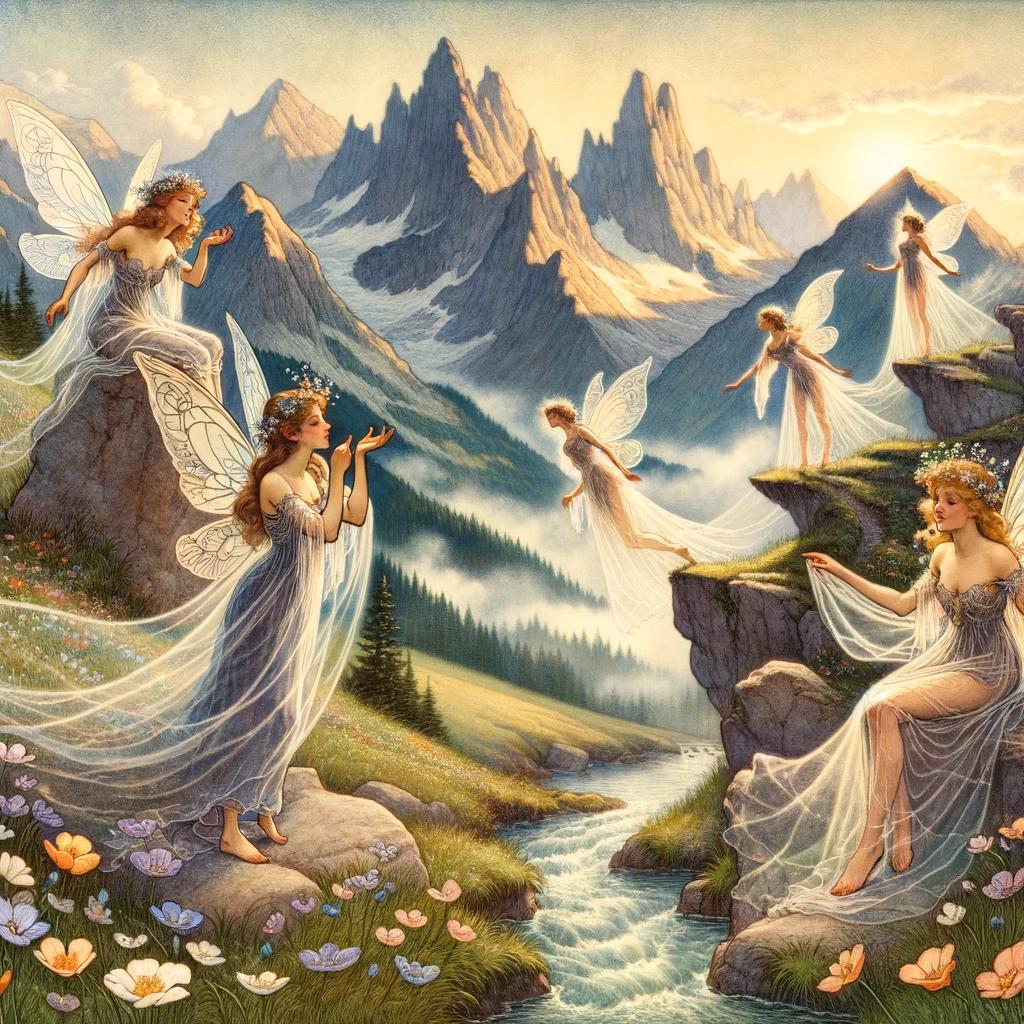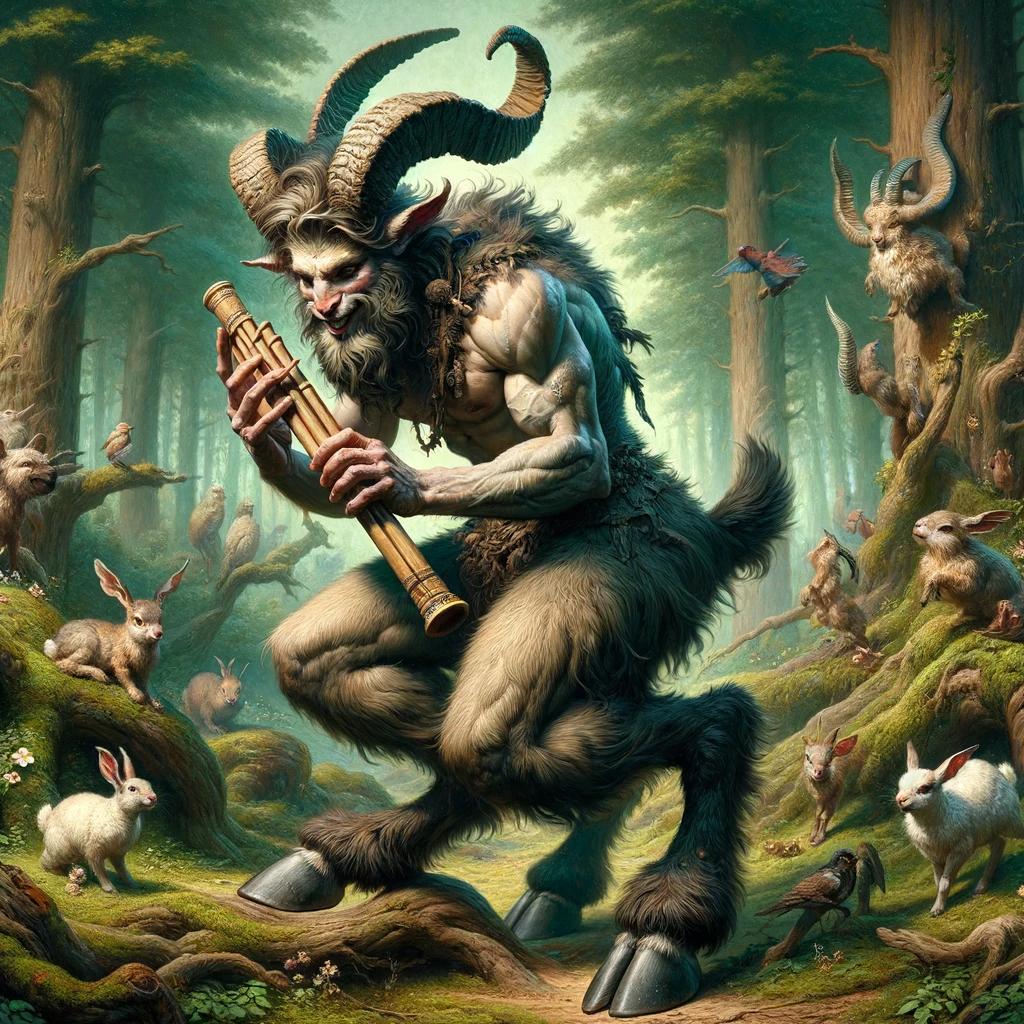The Gorgons in Greek Mythology: A Terrifying Tale of Power and Dread
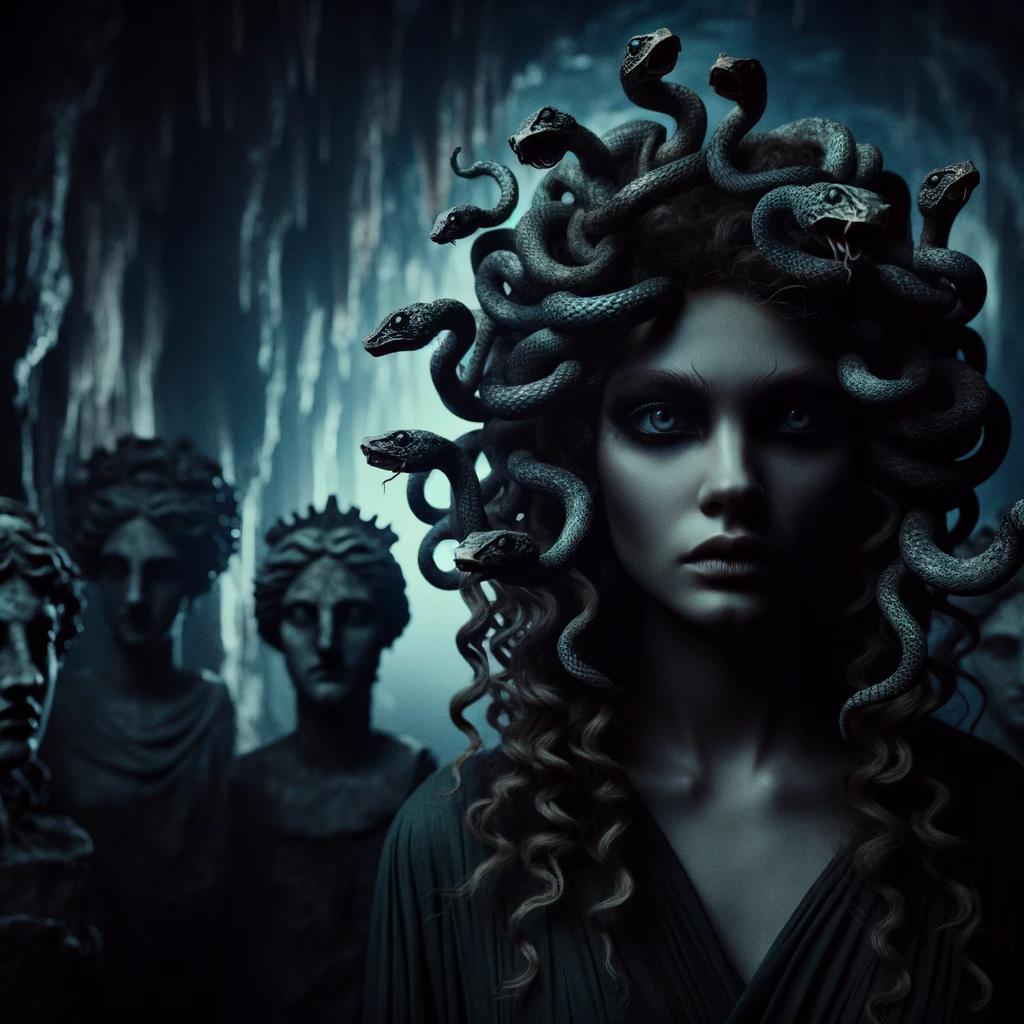
The Gorgons in Greek Mythology were fearsome and powerful creatures depicted as monstrous sisters with snakes for hair. Medusa, the most famous Gorgon, possessed the ability to turn anyone who looked at her into stone.
This article explores the origin and nature of the Gorgons, delving into their physical appearance, mythological roles, and cultural significance in ancient Greek society. Additionally, lesser-known Gorgons Stheno and Euryale, as well as other Gorgon-like creatures, will be examined.
From ancient art and literature to modern culture, the Gorgons continue to captivate and intrigue.
The Origin and Nature of the Gorgons
The Gorgons in Greek mythology are enigmatic creatures with a rich history and captivating nature. This section explores their mythological origins, genealogy, physical description, and unique attributes.
Mythological Origins and Genealogy of the Gorgons
The Gorgons trace their lineage back to the ancient Greek mythological traditions.
They are said to be the daughters of Phorcys and Ceto, primordial sea deities, and the sisters of various monstrous creatures such as the Graeae and the Hesperides.
According to some myths, the Gorgons were originally beautiful maidens who served as priestesses to the goddess Athena. However, their fate took a dark turn when they incurred the wrath of the goddess and were transformed into monstrous beings with snake hair and terrifying features.
Physical Description and Attributes of the Gorgons
Described as some of the most fearsome creatures in Greek mythology, the Gorgons possess unique physical attributes that set them apart. They are commonly depicted as female figures with round, wide heads adorned with venomous snakes instead of hair.
Their gazes are said to possess a legendary power capable of turning those who meet their eyes directly into stone. This formidable ability inspires terror and adds to their reputation as some of the most powerful beings in Greek mythology.
Their physical appearance is often portrayed with horrifying features, including large and eerie eyes, wide open mouths, prominent fangs resembling those of a pig or boar, and hanging tongues. Some representations even include reptilian attributes, such as serpent belts intertwined in their hair or emerging from their heads.
These terrifying and otherworldly characteristics have made the Gorgons a subject of fascination and intrigue throughout history.
Stay tuned for the subsequent sections of this article as we delve further into the realm of the Gorgons in Greek mythology.
Medusa: The Most Famous Gorgon
Medusa is undoubtedly the most renowned Gorgon in Greek mythology. She holds a significant role in various myths and legends, often portrayed as a fearsome creature with snakes for hair.
Medusa’s Role in Greek Mythology
Medusa was originally a beautiful mortal woman, but her fate took a dark turn when she caught the attention of Poseidon, the god of the sea. In a sacred temple of Athena, the goddess of wisdom, Poseidon and Medusa engaged in a forbidden affair.
This act of defilement enraged Athena, who transformed Medusa and her sisters into Gorgons as punishment.
As a Gorgon, Medusa became a terrifying monster with the power to turn anyone who looked directly into her eyes to stone.
She was banished to a desolate island, where she lived in seclusion, hiding her monstrous appearance from the world.
The Story of Medusa and Perseus
The tale of Medusa intertwines with the heroic deeds of Perseus, the son of Zeus and Danaë. Sent on a dangerous quest by King Polydectes, Perseus resolves to slay Medusa and bring back her head as a gift.
Equipped with a mirrored shield from Athena, Hermes’ winged sandals, and Hades’ helmet of invisibility, Perseus successfully infiltrates Medusa’s lair without being turned to stone. He carefully evades the Gorgon’s gaze, and using his sword, swiftly beheads her.
The severed head of Medusa possesses continued power, capable of turning enemies into stone even in death. Perseus uses this power as a weapon against his enemies and presents Medusa’s head to Athena as an offering of gratitude.
The story of Medusa and Perseus is not only a heroic tale but also reflects themes such as divine intervention, the power of transformation, and the triumph of mortal over monstrous forces.
It has captured the imagination of storytellers and artists throughout history.
- Medusa’s seduction by Poseidon
- Athena’s punishment and transformation into a Gorgon
- Medusa’s exile on a desolate island
- The heroism and cunning of Perseus
- The use of Athena’s aids in defeating Medusa
- Perseus’ ultimate victory and the consequences of Medusa’s head
These elements combine to create a fascinating story filled with tragedy, bravery, and mythical power.
Stheno and Euryale: The Lesser-Known Gorgons
Stheno and Euryale were the lesser-known sisters among the Gorgons in Greek mythology. While Medusa’s fame often overshadows them, these two sisters also played significant roles in the mythological narratives.
Lesser-Known Stories and Roles of Stheno and Euryale
Stheno and Euryale, like Medusa, were born as children of the sea deities Phorcys and Ceto. While Medusa was mortal, Stheno and Euryale were immortal. One distinguishing feature of the three sisters was that only Medusa possessed the power to turn mortals into stone with her gaze, while Stheno and Euryale lacked this ability.
According to some versions of the myth, Stheno and Euryale were portrayed as more ferocious and menacing than Medusa. They were often depicted as warrior-like figures, bold and formidable, contributing to their reputation as fearsome creatures.
Although less known, their roles in ancient Greek mythology should not be underestimated.
Relationships and Interactions with Other Mythological Figures
Stheno and Euryale were not only known for their connection to Medusa but also for their relationships with other prominent mythological figures. Their ancestry linked them to a lineage that included other notable creatures and heroes.
For example, the trio of Gorgon sisters were related to the sea monster Scylla, the Graeae sisters, and the hero Perseus.
In some versions of the myth, it is believed that Stheno and Euryale continued to exist even after Medusa’s demise at the hands of Perseus.
These surviving sisters carried on their role as protectors and guardians, thwarting those who dared to challenge their power.
The lesser-known stories and relationships surrounding Stheno and Euryale shed light on the depth and complexity of Greek mythology.
Their interactions with other mythological figures highlight the interconnectedness of various narratives within the rich tapestry of ancient Greek folklore.
Through their unique roles and relationships, Stheno and Euryale contribute to the enduring fascination with the Gorgon sisters in Greek mythology.
The Power and Influence of the Gorgons in Ancient Greek Culture
The Gorgons played a significant role in ancient Greek culture, leaving a lasting impact on various aspects of society. Their terrifying visage and mythical abilities made them powerful symbols, represented in art, architecture, literature, and poetry.
Symbolism and Representations of the Gorgons in Art and Architecture
The Gorgons’ fearsome appearance and transformative gaze made them popular subjects in ancient Greek art and architecture. They were often depicted in various forms, including sculptures, pottery, and decorative elements.
A prominent example of Gorgon symbolism can be seen in the pediment of the Temple of Corfu, the oldest stone pediment in Greece.
Here, a striking image of a Gorgon served as a protective symbol. Additionally, statues and representations of Gorgons have been discovered in different regions of Greece, such as Paros and Sicily.
Artistic portrayals of the Gorgons in the early classical period showcased their distinctive features. They had round, wide heads, hair composed of serpents, large and eerie eyes, wide mouths with hanging tongues, prominent teeth and fangs, open nostrils, and sometimes short, rough beards.
Reptilian attributes, such as belts made of snakes interwoven in their hair, were also attributed to them.
These representations often derived some elements from ancient Greek religious concepts, such as the dragon Delphyne of Delphi and the Oracle priestess, Pythia, who delivered prophecies.
Gorgons in Ancient Greek Literature and Poetry
The Gorgons were prominent figures in ancient Greek literature and poetry, appearing in numerous myths and stories. Their appearances ranged from central roles to more supporting characters.
One of the most famous Gorgons, Medusa, featured prominently in Greek mythology.
Her story, intertwined with Perseus, has been retold in various narratives. Medusa’s iconic ability to turn people to stone made her a formidable antagonist and a symbol of danger.
Besides Medusa, her sisters, Stheno and Euryale, also played roles in ancient Greek stories, although they were relatively lesser-known compared to Medusa. Their stories often depicted them as formidable adversaries and guardians.
The tales of the Gorgons and their encounters with Greek heroes and gods provided rich material for ancient Greek poets and storytellers. Their narratives served as cautionary tales, exploring themes of power, fear, and the consequences of encountering the supernatural.
In summary,
The Gorgons held immense power and influence in ancient Greek culture. Through their symbolism in art and architecture and their presence in literature and poetry, they became enduring figures that fascinated and captivated the ancient Greeks.
Their legacy continues to intrigue us today, reminding us of their significant role in the rich tapestry of Greek mythology.
Other Gorgon-like Creatures in Greek Mythology
In addition to the terrifying Gorgons, Greek mythology is rich with other monstrous creatures that share similar traits and attributes. These creatures not only add depth to the mythological narratives but also showcase the diverse and imaginative world of ancient Greek folklore.
Ceto and Other Sea Monsters
Within the realm of the sea, there are several formidable creatures comparable to the Gorgons. One prominent figure is Ceto, a primordial sea goddess often depicted with serpentine features. She is known as the mother of numerous sea monsters, including the fearsome Charybdis and the infamous Scylla.
Charybdis, a monstrous whirlpool, was believed to be a threat to sailors, capable of engulfing entire ships. On the other hand, Scylla was a multi-headed sea monster who resided in a treacherous strait, where she would snatch and devour unfortunate sailors.
These sea monsters, like the Gorgons, inspire both awe and terror, embodying the vast power of the sea and its inherent dangers.
The Muses and Gorgon Connections
The Muses, the nine goddesses of inspiration and artistic creation, have intriguing connections to the Gorgons. While the Muses themselves are benevolent and guide humans in the realms of art and knowledge, their origin story intertwines with that of the Gorgons.
According to some accounts, the Muses were born from the blood of Medusa, the most renowned Gorgon. This connection suggests a complex relationship between the terrorizing Gorgons and the creative forces of inspiration and artistic expression.
- Inspiration: The Muses’ association with Medusa’s blood signifies the transformative power of creativity, even arising from the darkest and most fearsome aspects of existence.
- Duality: The juxtaposition of the terrifying Gorgons and the beautiful Muses highlights the inherent duality of mythology, where both light and darkness coexist.
These connections demonstrate the intricate web of relationships within Greek mythology and the ability to find significance and meaning in even the most unexpected places.
Gorgons in Modern Culture
Gorgons, with their terrifying and mythical nature, have left a lasting impact on modern culture. Their presence can be seen in various forms of art, literature, and popular media. Let’s explore how Gorgons continue to captivate and inspire creators in contemporary society.
Cultural References and Depictions of Gorgons in Literature and Film
Gorgons have found their way into numerous literary works and films, becoming iconic figures within the fantasy and mythological genres. Their ability to petrify with a single glance makes them formidable and fearsome antagonists.
In literature, Gorgons often make appearances as formidable foes, challenging the heroes with their petrifying gaze. These encounters showcase the enduring power and dread associated with these mythical creatures. Authors such as Rick Riordan, Madeline Miller, and Neil Gaiman have woven Gorgons into their narratives, drawing upon their rich mythological lore.
Similarly, Gorgons have made their mark in the world of film. From visually stunning adaptations of Greek myths to modern retellings, these creatures have become staples in cinematic storytelling. Their striking appearance and deadly gaze create dramatic and visually captivating moments on the silver screen.
Gorgons as Symbolic Figures in Contemporary Art and Popular Culture
The symbolism of the Gorgons extends beyond their fearsome nature. In contemporary art, Gorgons often represent themes of power, femininity, and transformation. Their serpentine hair and ability to turn others into stone symbolize the destructive potential of beauty and the perils of unchecked power.
Moreover, Gorgons have become an emblematic image in popular culture, finding their way into tattoos, fashion, and other forms of visual expression. Their striking visage and captivating mythology provide endless inspiration for artists seeking to evoke a sense of awe and intrigue.
As we journey into the 21st century, the Gorgons continue to leave their mark, proving that these ancient mythical creatures still resonate in the modern world. Their enduring presence in various art forms and cultural expressions demonstrates the timeless power and allure of Greek mythology.
.











